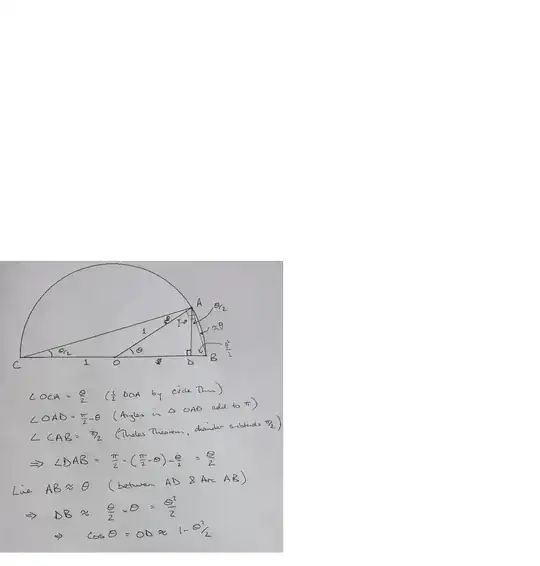Everyone knows the picture that explains instantly the small angle approximation to the sine function (as defined by the parametrisation of the unit circle): "what's the length of that arc?" "See how for small angles, it forms the opposite side of a triangle...?"
Cosine is more problematic; the corresponding annotation on Wikipedia to the diagram mentioned above reads:
H and A are almost the same length, meaning $\cos(\theta)$ is close to $1$ and $\frac{\theta^2}{2}$ [?!] helps to trim the red away [?!].
For the syllabus I teach, students must be able to differentiate sine and cosine from first principles using the above approximations. And certainly they don't need to understand the approximations; but it would be nice, wouldn't it...
Now everyone also knows that the small angle approximation for $\cos$ is just the truncated ($O(\theta^3)$) Taylor series, and it's fairly easy to see that for small $\theta$:
$$\cos(\theta)= \sqrt{1-\sin^2(\theta)} \approx \sqrt{1- \theta^2}$$
which $\approx 1- \frac{\theta^2}{2}$ by the binomial expansion for $\sqrt{1-x}$
...But my students don't know Taylor series or binomial expansions.
Question: Can one do any better?
